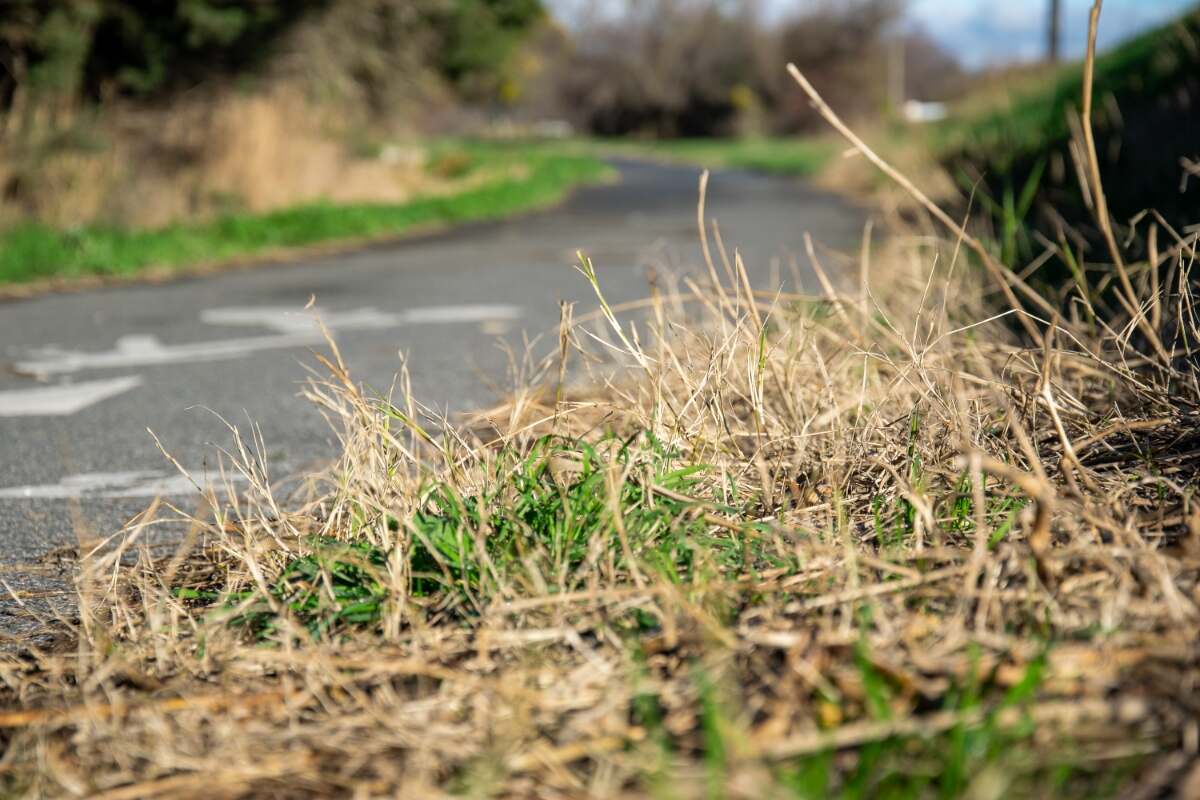
Dormant grass vs. dead grass – can you tell the difference? Well, it’s not always so easy for the average homeowner. You’ve watered, mowed, and fertilized your lawn, but now you start to notice patches of unsightly brown. That dreaded word ‘dead’ starts to enter your mind. Is it really dead? Or just dormant?
Let’s take a look at how you can tell the difference between dead grass and dormant grass to help put your mind at ease.
How to Tell the Difference Between Dead and Dormant Grass
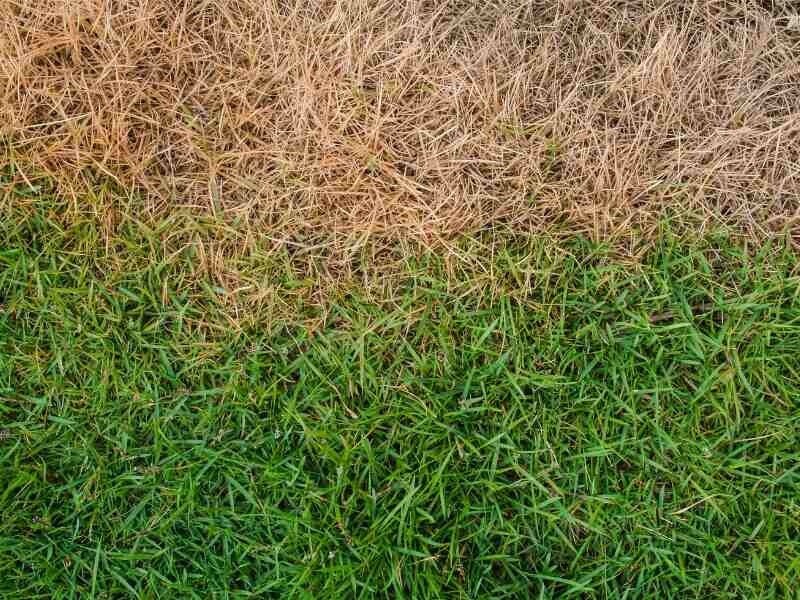
For any homeowner who’s seen the color fading away from their lawn, fear will almost always grip them. But before you rip up the grass and lay new sod, look out for these signs to determine if your grass is dead or simply dormant:
Do a Visual Inspection of Your Lawn
Get up close to your grass and look for signs of life. Springtime usually brings with it small green buds blooming on the crowns of cool-season grasses and runners along the soil surface for warm-season grasses.
This is the grasses’ way of telling you it’s alive and well and will be happy to return to life soon enough. These signs mean it’s just about to start growing again.
Check the Consistency
Warm-season grasses like St. Augustine or Bermuda, in particular, can show a lot of funky patterns when entering and coming out of dormancy. If your lawn is showing signs of change with an overall consistent pattern, then it’s a good sign the grass is still alive.
For cool-season grasses, you can expect to see a uniformly brown or yellowish shade with no discrepancies across your lawn if the grass is dormant.
Consider Temperature and Weather Conditions
The onset of dormancy is triggered by varying temperatures. During heatwaves or cold snaps, for example, you will see patches of brown grass appearing across the lawn. However, if the brown spots persist after the extreme temperatures have passed, that may be a sign that your grass is actually dying.
The Tug Test
The simplest approach to determine if your lawn is dead or dormant is the tug test. Simply take hold of one small patch of grass and pull.
If there’s resistance and the roots look white, then your lawn is simply sleeping. But if your grass comes right up, that probably means it’s disconnected from its roots, and it may be dead or on its way there.
Water Your Lawn
When was the last time you gave your lawn a good watering? If you don’t have an automatic irrigation system, manually watering your grass may help determine if it is simply dormant or has completely given up the ghost.
Dormant brown grass will revive and come back to life after a good, long drink, while dead grass will stay brown and unresponsive.
What Is Dormant Grass?
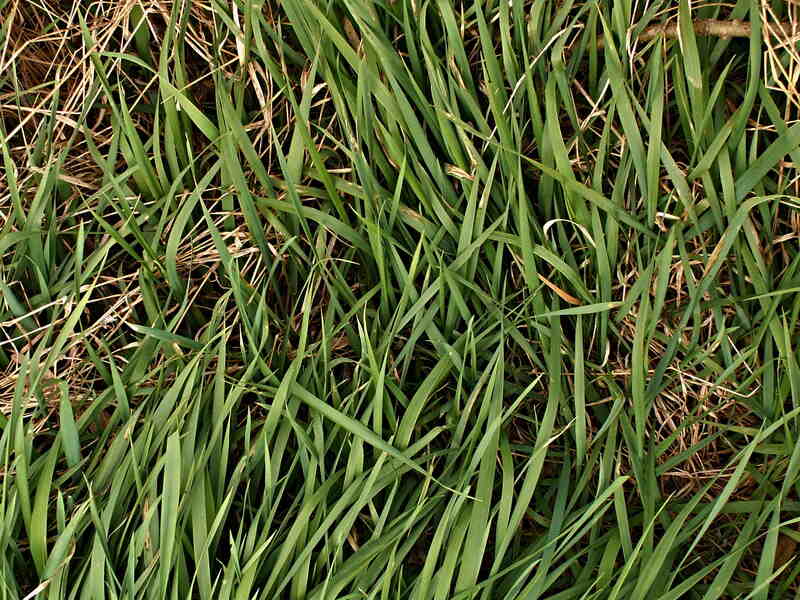
Simply put, dormant grass is alive and well – just sleeping. It’s your grass’s way of conserving energy during times of extreme weather like drought or extreme cold.
When your lawn enters a state of dormancy, the leaves turn brown, and it looks like it’s dead. However, the roots are still alive and holding water and nutrients in reserve until normal weather conditions return.
When Does Grass Go Dormant?
Dormancy is a natural protection mechanism caused by cold temperatures in the winter or dry conditions during a hot summer. This can vary a bit from region to region, as different climates will have different periods when the grass will go dormant.
Dormancy is usually triggered when temperatures drop below 45 degrees Fahrenheit or stay consistently higher than 95 degrees Fahrenheit for several days in a row. Regular dormancy periods also depend on the grass type.
Cool-Season Grass Dormancy
Cool-season grass tends to go dormant during extended periods of drought and extreme summer heat. This is because cool-season grasses aren’t as efficient in their use of water or nutrients as warm-season varieties. As a result, they require more water to survive during long periods of heat or drought.
In the winter months, your cool season grass won’t necessarily go dormant or look dead but instead go into what is referred to as a suspended form of growth. This means that cool-season grass will create complex sugars as an antifreeze, which helps the grass survive when temperatures become frigid.
Warm-Season Grass Dormancy
Even though warm-season grasses are more efficient at using water and nutrients, they can still enter a state of dormancy when temperatures hit lower than 65 degrees Fahrenheit. This time of year will vary depending on where you live and the climate. For moderate climates, this dormancy period usually begins around mid-November.
The purpose of warm-season grasses going dormant is so that their roots can conserve water and nutrients in case an extended drought or frigid temperatures come their way.
Caring For Dormant Grass

A bit of TLC can go a long way in helping your grass revive from its period of dormancy. This can include such things as:
- Avoid Mowing: Why cut something that’s already down and out? Avoid mowing during the dormancy period to reduce any unnecessary stress on your lawn.
- Water Intelligently: Once your grass starts to look a bit green again, you can kickstart the revitalization process with some well-timed watering.
- Fertilize Properly: High-nitrogen fertilizers are best used when your grass is actively growing. As dormancy approaches, use a potassium-based fertilizer instead.
- Weed Control: Your grass is especially vulnerable to weeds when it’s dormant. Apply a pre-emergent herbicide just before your grass’s dormant period to prevent greedy weeds from moving in and stealing your lawn’s nutrients while it’s sleeping.
- Reduce Foot Traffic: Foot traffic and furry friends running wild across your lawn while it’s dormant can cause irreparable damage. So keep foot traffic to a minimum as much as possible while your dormant lawn is resting.
Causes of Dead Grass
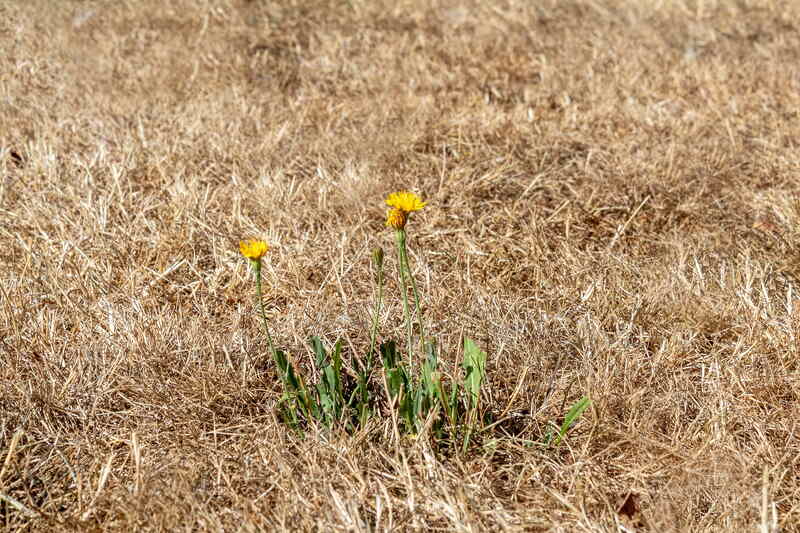
The list of causes for dead grass seems to be never-ending. But, some of the most common culprits include excessive thatch layers, drought, bad mowing practices, improper watering, pests, and lawn diseases. Here are a few of the main offenders:
The Effect of Thatch on Your Lawn
Some thatch is beneficial for your lawn. It helps retain moisture and protect against extreme temperature fluctuations. But if it builds up too much, it can destroy your grass, blocking air, water, and nutrients.
Your thatch layer’s thickness should stay under ¾ inch for optimal lawn health. Any thicker, and the roots of your grass will become rooted in the thatch layer due to a lack of water or oxygen – leaving them vulnerable to drought and other damaging conditions.
Drought
Dormancy is a necessary measure taken by your lawn to protect itself from drought. It’s an effective defense mechanism for surviving hot, dry weather conditions with little access to water and nutrients.
Unfortunately, if the drought lasts too long, even dormant lawns will eventually lose their water reserves and die. Proper watering is key to helping your lawn survive and get through droughts.
Poor Mowing Practices
We all love a freshly mowed lawn – the smell, the sight, and that little burst of pride when the job is done. But there’s a fine line between a properly mowed lawn and one that gets cut down too frequently or mowed way too short.
Cutting your grass too often or too short will put undue stress on your turf and cause it to dry out, turn brown, and eventually die. To keep your grass looking luscious, make sure you mow no more than a third of the grass’s height at a time.
Pests
Several insect pests can totally destroy lawns, especially when maintenance practices aren’t up to standard.
Poor mowing habits and overwatering or over-fertilizing can open the door to pests infiltrating your lawn. This will weaken its roots, making it more vulnerable to pulling out of the ground and eventually dying.
Lawn Diseases
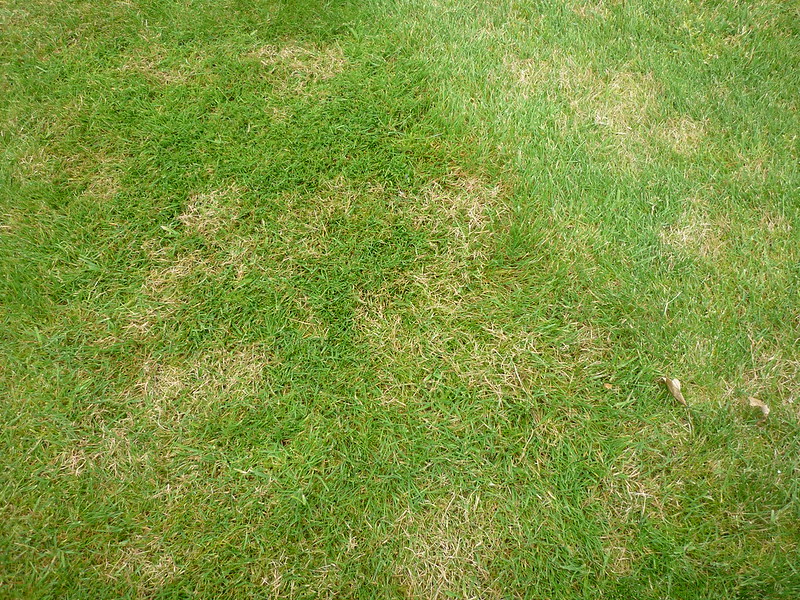
A sure sign of disease in your lawn is the presence of fungi or mold. These pesky little creatures require excess water, low sunlight, and limited air circulation to thrive.
So, if you live in a place with moderate temperatures and enough sun, take care when watering your lawn to make sure it isn’t getting overwatered. An accumulation of water in your yard can drown the grass and cause the growth of fungi.
Weeds
You may have heard it said that weeds are opportunistic and invasive, and this is an accurate description of how they steal water and nutrients from your grass, causing it to turn brown and eventually die. As soon as you spot these greedy pest plants in your lawn, get rid of the weeds immediately before they can take over completely.
Dog Urine
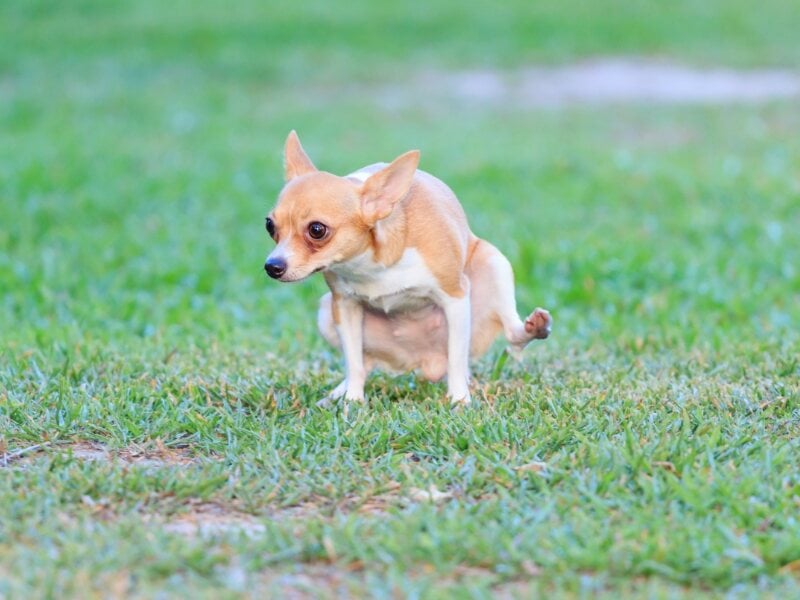
Dog urine contains lots of nitrogen – a vital soil nutrient. It’s great when fertilizing your lawn, but not so much when your pup decides to pee in the same spot over and over again.
The high concentration of nitrogen in dog pee can burn the grass, leaving you with yellow or brown patches at best and bare soil spots at worst. Avoid this issue by practicing responsible dog ownership and training your pup to pee in the right places.
Salt Damage
Just like humans, your lawn needs some salt to survive, and a moderate amount of it is generally found in soil. But too much salt can be detrimental to the health of your plants. It pulls vital moisture from the soil and prevents your turf from getting oxygen and water – resulting in potentially serious damage.
During snowy winters, deicers containing salt are often spread across roads, which can wind up on your lawn and cause too much salt in the soil. Try to avoid spreading salt near your lawn, and if it happens, at least water the grass immediately after to try and flush out some of the salt.
Debris
When debris like leaves, branches, or even toys left by kids pile up on your lawn, it can be detrimental to the grass’s health and cause brown patches of dead grass. The same applies to heavy foot traffic across your yard, making it susceptible to wilt and eventual death.
This is easy to resolve, though. Just make sure your lawn doesn’t accumulate too much debris by removing leaves, twigs, and other plant matter often.
How to Deal With Dead Grass
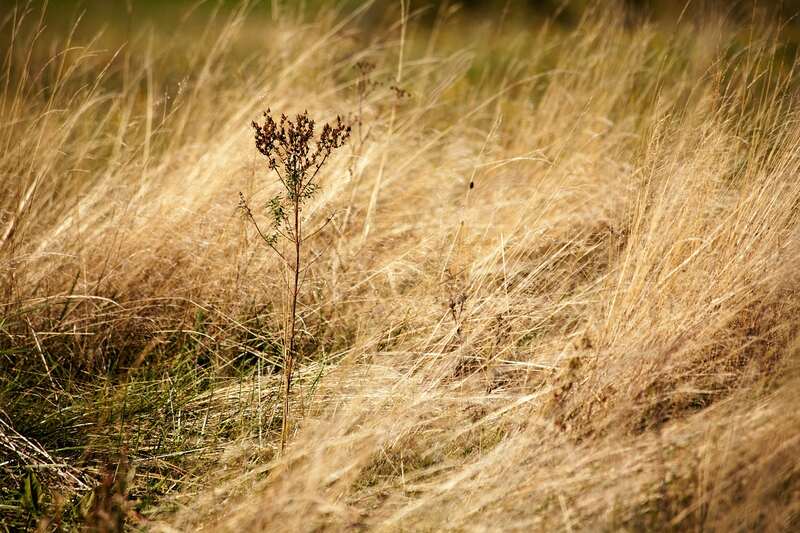
Correct maintenance is the best preventative measure for keeping your lawn healthy and vibrant. However, if you have dead patches of grass from poor practices or neglect, it can be difficult to spot until the damage is done.
When this happens, all hope isn’t lost just yet. All it will require is a bit of hard work and dedication to bring your green space back from the brink.
Follow our 7-step plan to revive a dead lawn by planting new grass, and you’ll have a thriving, healthy lawn again in no time.
How to Deal With Dead Spots
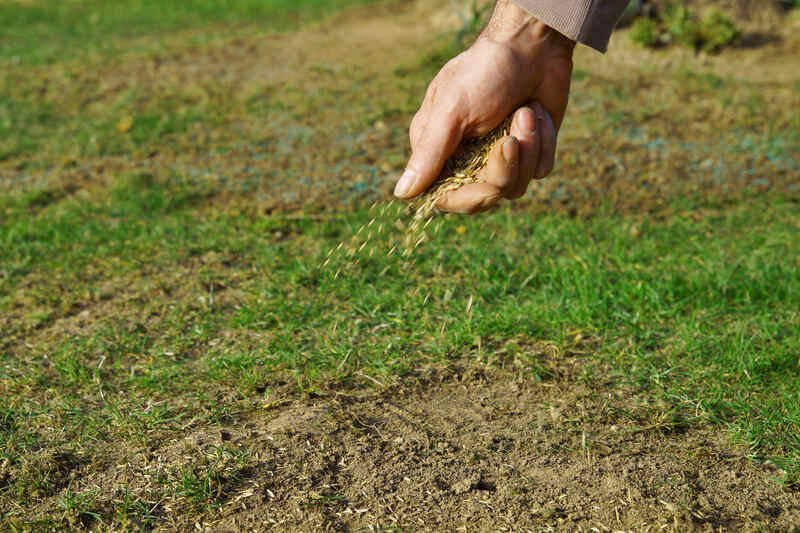
No matter how much you love your lawn, dead spots are an unavoidable part of being a passionate homeowner. Dead patches can occur due to a variety of causes, such as drought or fungal disease – leaving your lawn looking like an unsightly patchwork quilt of lifeless grass.
In such cases, some serious reviving and rejuvenation is in order. Take things into your own hands and bring dead spots back to life with these simple steps:
- Step 1: Rake the Spot – Start by giving the area a good raking. This will help to remove any excess thatch, debris, or rocks.
- Step 2: Moisten the Soil – Use a garden hose to moisten the soil until it’s damp. Be careful with the amount of water, though – you just want it to be slightly damp, not soaked.
- Step 3: Cut a Border Around the Spot – With a garden trowel, start cutting around the dead grass area up to three or four inches deep. To ensure you’re reaching the right depth, insert the edge of the blade into the earth to the hilt.
- Step 4: Pry Up the Area – Place a square-bladed shovel into the cutting around the dead grass and begin pulling up the root system. Move along the cutting while you pull back on the handle, ensuring that all roots are severed during this process.
- Step 5: Remove the Spot – Once the root system is cut free, you can easily remove the dead grass from its spot. Carefully rake off any excess soil attached to the roots and backfill the hole, making sure it all stays level.
- Step 6: Fill in the Hole – Now spread some topsoil into the hole you dug up, ensuring that there’s enough to cover the entire area and make it flush with the surrounding ground.
- Step 7: Replant or Resod – Now you’re ready to replant the dead spot by spreading new grass seed or laying new sod. Your new grass will need watering every few hours for the first few weeks, and you won’t be able to walk on it until its roots take a firm hold of the soil.
FAQ About Dormant Grass and Dead Grass
No, once the grass has died, the only way to get life back into your lawn is to introduce new growth with either seed or sod.
It’s best to remove and replace dead grass as soon as possible. Dead grass buildup can weaken the lawn around it and cause even more of your lawn to die.
By overseeding your lawn, you increase the odds of getting thicker and lusher patches of grass. New grass will fill in between the existing grass blades, creating a lusher and healthier look.
Brown spots on your lawn could be caused by things like drought, wrong mowing practices, pests, and diseases such as fungi or even pet urine. Make sure you diagnose the correct cause of the brown spots before you try to fix them.
The Grass Is Always Greener
Did you know that grass is a living thing, just like us? And like all living things, it sometimes needs to rest. Its period of dormancy is natural and nothing to be worried about. Once moderate temperatures return or your grass type’s growing season rolls around, your lawn will be green and beautiful once again. But if you do have to deal with dead spots on a patchwork quilt of grass, you still have hope for a green and healthy lawn. LawnStarter can help you connect with the best lawn care professionals in your area and get your yard back to looking lush and vibrant in no time.
Main Photo Credit: Miguel Costa / Canva Pro / License